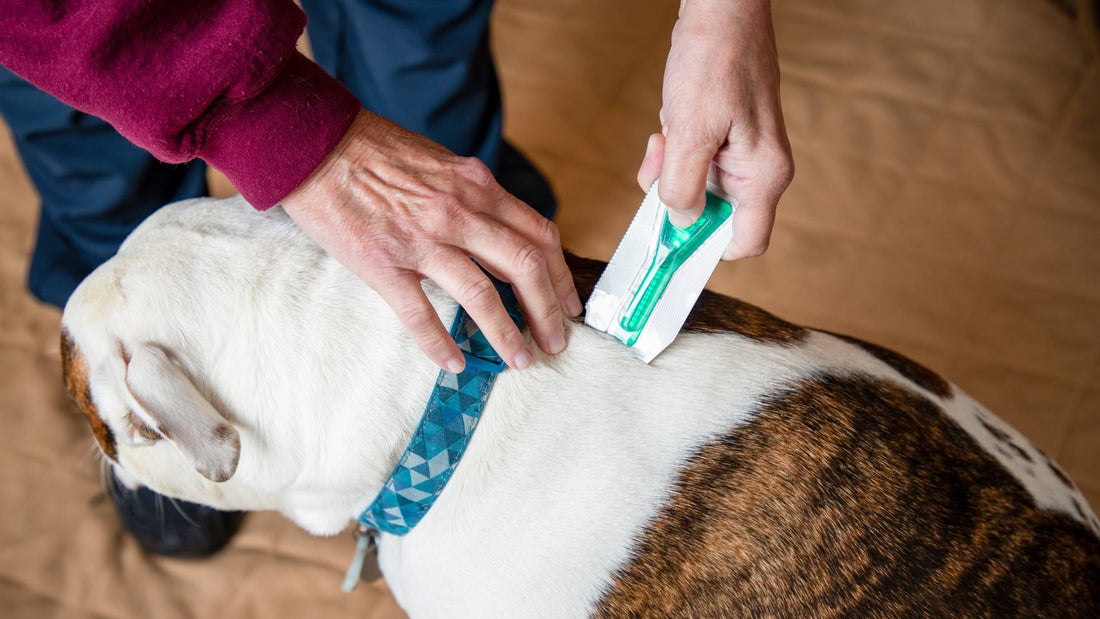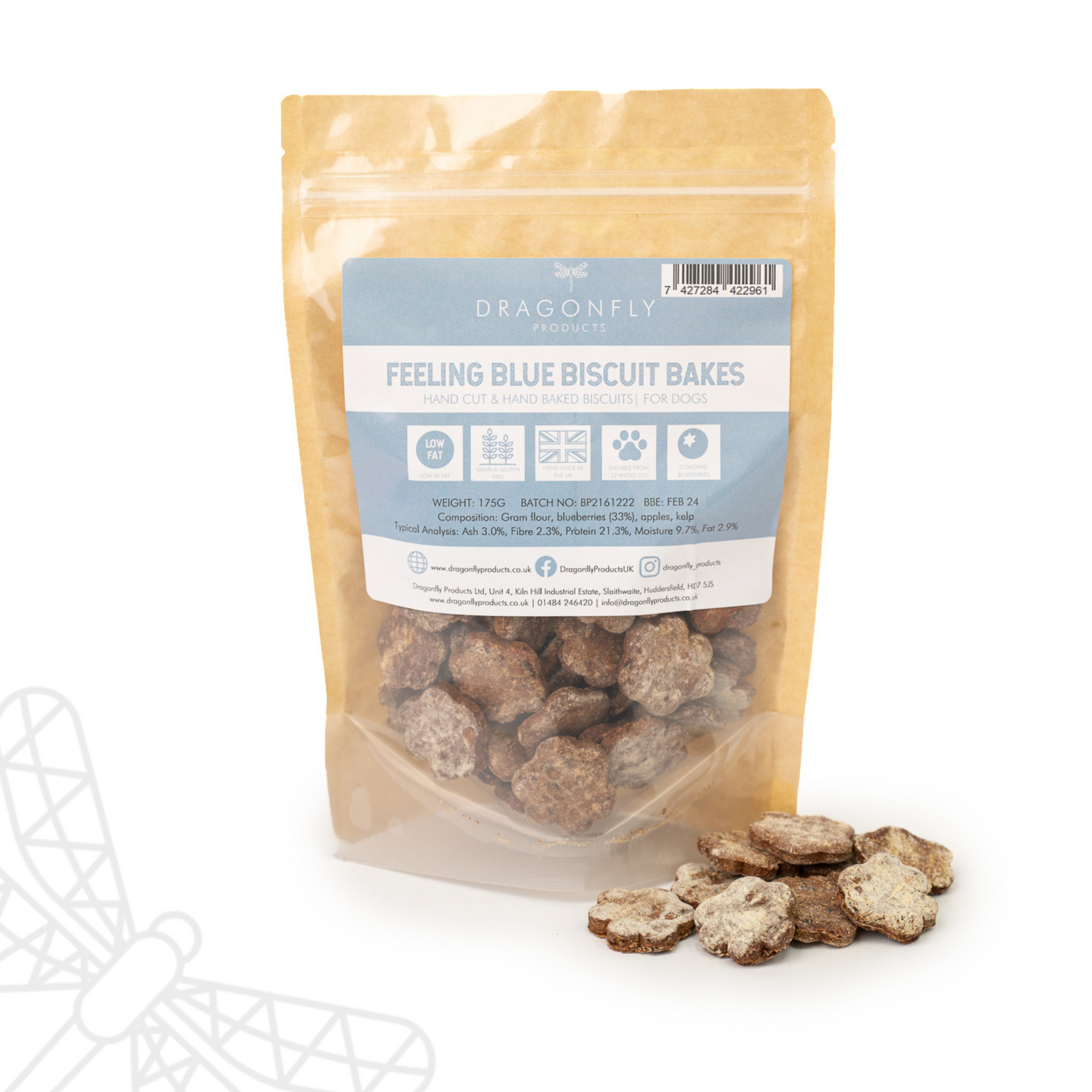
Natural Flea Treatments for Dogs: Why I Don’t Recommend Monthly Chemical Spot-Ons
In the UK, over 2,000 reports of adverse reactions to flea and tick treatments are received each year by the Veterinary Medicines Directorate (VMD). Some involve serious side effects—including skin burns, vomiting, seizures, and in very rare cases, death.
And that’s just the reactions that are actually reported.
Now, I’m not trying to scare you—but I do think it’s important we talk honestly about what we’re putting on (and into) our dogs' bodies each month.
Because while flea prevention is important—fleas can cause a lot of problems—routine monthly chemical treatments aren’t the only option. And in many cases, they’re not the best one either.
Table of Contents
- What Are Spot-On Flea Treatments—And Why Are They So Common?
- The Hidden Risks of Monthly Chemical Flea Treatments
- But Don’t We Need to Treat for Fleas All Year Round?
- What I Use Instead: Natural Flea Prevention That Actually Works
- When to Use Chemical Treatments (And How to Minimise Risk)
- What I Do with My Own Dogs
- Final Thoughts: Treat the Dog, Not the Calendar
What Are Spot-On Flea Treatments—And Why Are They So Common?
If you’ve ever visited your vet for a check-up, chances are you’ve come away with a reminder to “keep on top of fleas” with a spot-on treatment like Advocate, Frontline, Advantage, or a monthly chewable tablet like NexGard.
They’re convenient. They’re marketed as safe. And they’re often recommended year-round—even if your dog isn’t showing any signs of fleas.
But here’s the issue: many of these products contain pesticides and neurotoxins, designed to kill parasites by disrupting their nervous systems. And while they’re supposed to be safe for dogs, they can—and do—cause side effects.
The Hidden Risks of Monthly Chemical Flea Treatments
Let’s talk about what’s actually in many of these products.
Common active ingredients include:
- Imidacloprid
- Fipronil
- Permethrin (toxic to cats, by the way)
- Afoxolaner
- Fluralaner
These chemicals are designed to kill insects—but they also affect mammalian nervous systems in large enough doses.
According to the VMD’s own product safety database, adverse reactions can include:
- Skin irritation, rashes or hair loss
- Digestive upset
- Lethargy or behavioural changes
- Seizures
- Tremors
- Hypersalivation
- Incoordination
And while serious side effects are rare, they’re not unheard of. In fact, the VMD advises that all suspected reactions—even mild ones—should be reported, so the safety profile of these medicines can be continually monitored.
The issue is, many pet owners simply don’t make the connection between symptoms and flea treatments—especially if they happen days later.
And for some dogs, these treatments are just too harsh, especially if they already have a compromised immune system, sensitive skin, or other underlying health issues.
But Don’t We Need to Treat for Fleas All Year Round?
Here in the UK, flea risk fluctuates with the seasons. Fleas thrive in warm, humid conditions—so you’ll see more activity in spring, summer, and early autumn. But they can survive indoors in heated homes during winter too.
That said, blanket year-round chemical treatment is often unnecessary, particularly if your dog:
- Isn’t in contact with lots of other animals
- Lives in a low-risk environment (e.g., urban area, indoors most of the time)
- Has had no history of flea infestations
- Is supported with natural preventative methods
The focus should be on monitoring and prevention, not automatic medicating.
What I Use Instead: Natural Flea Prevention That Actually Works
I’m not anti-medicine. If a dog has an active infestation and is suffering, I will use targeted treatment to get it under control. But for ongoing prevention, I rely on a combination of natural methods that support the dog’s system without overloading it with chemicals.
Here’s what I recommend:
1. Regular Grooming and Checks
Get into the habit of checking your dog’s skin regularly—especially around the tail base, belly, armpits, and behind the ears. Use a flea comb weekly during warmer months.
This helps you spot a problem early, so you can respond without jumping straight to heavy chemical treatments.
2. Apple Cider Vinegar Spray (Diluted)
A simple spritz made from apple cider vinegar and water (50:50) can help deter fleas naturally. The smell and acidity make your dog’s coat less appealing to pests.
Spray lightly onto the coat, avoiding the eyes and genitals. It’s not a treatment—it’s a preventative. And it’s gentle enough for regular use.
3. Essential Oil-Based Natural Repellents
Look for UK-approved natural flea sprays containing safe essential oils like:
- Lemongrass
- Cedarwood
- Lavender
- Neem oil
Important: Never apply concentrated essential oils directly to your dog. Always use a dog-specific product or consult someone qualified in canine aromatherapy.
4. Herbal Support for the Immune System
A healthy immune system is a dog’s best natural defence against parasites. Diet plays a big part here—opt for:
- A high-quality, species-appropriate diet
- Natural supplements like brewer’s yeast and garlic (in appropriate, dog-safe amounts)
- Omega-3 oils to support skin health
5. Home Environment Management
Flea prevention starts in the home. Here’s what I do regularly:
- Vacuum thoroughly (especially under sofas and dog beds)
- Wash bedding at 60°C
- Sprinkle diatomaceous earth (a natural flea-killing powder) on carpets and leave overnight before vacuuming
- Use flea-repellent sprays on soft furnishings and skirting boards
Keep your environment uninviting to fleas, and your dog’s chances of picking them up drop significantly.
When to Use Chemical Treatments (And How to Minimise Risk)
There are times when chemical intervention is necessary—particularly during a full-blown infestation. If that happens:
- Speak to your vet and choose the least aggressive option for your dog’s size and health
- Never double up (e.g., using a flea collar and a spot-on)
- Don’t treat preventatively if it’s not needed—treat reactively and thoughtfully
- Report any unusual symptoms to the VMD’s Suspected Adverse Reaction reporting system via your vet or directly at gov.uk/report-veterinary-medicine-problem
What I Do with My Own Dogs
For those of you who’ve followed me for a while, you’ll know I have two dogs, Dolly and Reggie.
Neither of them are on monthly spot-on treatments. Instead, I follow the routine I’ve just outlined—natural repellents, regular checks, a clean home, and supporting their immune systems through diet.
In the summer months, I might ramp things up with extra repellents and more frequent grooming, but I don’t believe in adding monthly pesticides to their routine “just in case.”
So far, touch wood—we’ve had no flea problems.
Final Thoughts: Treat the Dog, Not the Calendar
The idea that every dog needs a chemical flea treatment every month, all year round, is outdated—and frankly, unnecessary in most cases.
Yes, fleas can be a nuisance. But you don’t have to compromise your dog’s long-term health to keep them under control.
Prevention doesn’t have to mean pesticides.
With the right approach, you can protect your dog using natural, gentle, and effective alternatives—and you’ll avoid building chemical resistance in the process.
For any further help and advice please contact us on 01484 246420 and why not join our social media channels and online community on Instagram, Facebook or YouTube.
With Wags and Woofs,
Laura, Dolly & Reggie





